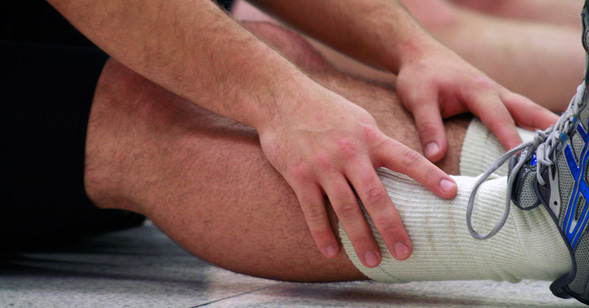
The Reason You Get Sore A Day After Your Workout
Most people, whether they’re new to exercise, are a long-term gym goer, or are an accomplished athlete, experience muscle soreness 12-48 hours after they do a new and/or tough training session. Delayed Onset Muscle Soreness (DOMS) is the term used to explain this phenomenon.
What is Delayed Onset Muscle Soreness (DOMS)?
DOMS is a common result of physical activity that stresses the muscles beyond what they are used to. This soreness, as mentioned above, generally appears 12-48 hours after exercise and can range from mild discomfort to debilitating soreness, where it is even difficult just getting out of bed or sitting down in a chair.
DOMS should not be confused with the muscle soreness or fatigue you experience during exercise or the acute, sudden pain of an injury (e.g. a muscle strain or sprain). It is simply a sympton of placing stress on your muscles. This stress can help your muscles adapt to the exercise and so, helps you become stronger and better at performing the exercise next time.
What causes DOMS?
Unfortunately there is no universally accepted explanation of the underlying cause of DOMS. A popular theory, that has now been refuted, was that DOMS was caused by lactic acid build up in the muscles after intense bouts of exercise. However, research has shown that blood lactate returns to resting levels within one hour of strenuous exercise.
Although the precise cause of DOMS is still being debated, most researchers agree that it is the result of microscopic tearing of muscle fibers, where the amount of tearing and soreness depends on the type, time and intensity of exercise you are doing.
Any exercise/movement you aren’t used to doing (or haven’t done in a long time) can lead to DOMS. However, it is widely agreed that eccentric muscle contractions seem to cause the most soreness. Eccentric contractions are movements that force a muscle to contract while it lengthens. A simple example of this is the lowering movement of a bicep curl. Other examples include running downhill (the quadriceps muscles on the front of the thigh are subjected to the greatest eccentric loading), and the downward motion of a squat and push up.
How do you treat DOMS?
Like with the cause of DOMS, there is still an ongoing debate on its treatment. At this stage, no method has been shown to significantly speed the recovery from DOMS.
However you might want to try some of the following advice, to see what works for you:
- Wait. The soreness will go away between 2-7 days. (If it doesn’t it might be worthwhile going to see your GP).
- Do some easy low-impact aerobic exercise (such as walking or an easy swim) to increase blood flow.
- Gentle massage.
- Try contrasting a cold/warm shower (or an ice bath). There is no evidence that this effective, however elite athletes use this method and claim it works.
- Allow the soreness to subside before going back to vigorous activity to give time for your muscles to recover.
- Do some yoga.
- Do some stretching (evidence shows that stretching does not alleviate DOMS, however people find that it simply feels good).
How do you prevent DOMS?
DOMS can be hard to prevent, especially when you are looking to increase your strength and fitness. However, below are some ways to help prevent and shorten the duration of DOMS:
- Ensure you perform an adequate warm up before you start exercising.
- Try to avoid making sudden dramatic changes to your workout program.
- Gradually build the time and intensity of new exercises/workouts.
- Start a new weight lifting program with light weights and high repetitions.
- Don’t overly extend the duration of the eccentric contraction phase of an exercise.
Summary
The precise cause of DOMS is not yet known, nor is its treatment. However the majority of DOMS seems to result from eccentric muscle contractions. DOMS isn’t a bad thing as it can help your muscles adapt to exercise, making you fitter and stronger. Give your muscles time to recover from the soreness, always ensure you do an adequate warm up before your workout, and if necessary ease your way into new exercises.
